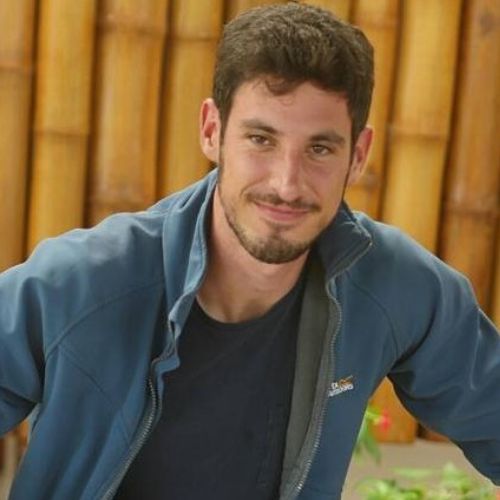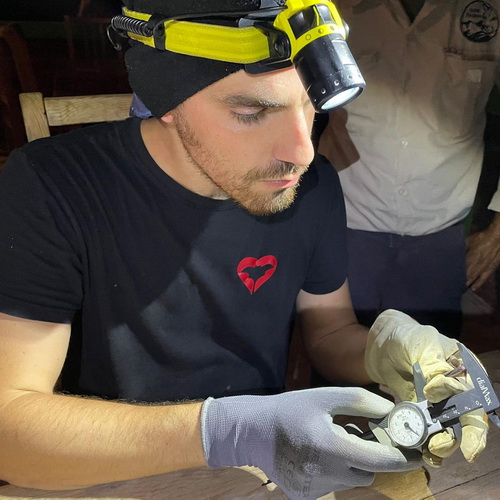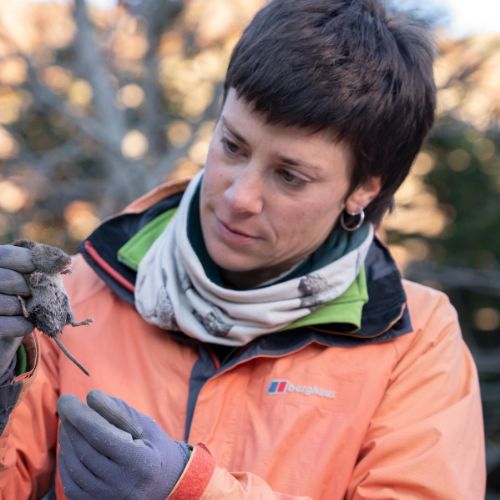Responses of animal populations to climate change

© Adrià López-Baucells
In the coming decades, climate change is likely to become the main threat to biodiversity. We therefore urgently need to understand how organisms respond to global warming and the increasingly frequent and intense climatic extremes. Long-term monitoring data are ideal to explore the effects of climate change on wildlife, and to identify which life-history traits make some species more sensible and vulnerable than others to this environmental factor.
Butterflies have been used as a study model for analysing the effects of climate change on biodiversity since early research on this subject. As ectothermic organisms, ambient temperatures strongly influence their rates of development and phenology. They are therefore an ideal subject to study how populations are being affected by phenological mismatch with their trophic resources (i.e., host plants for larvae and nectar sources for adults) under ongoing rapid climate change. Moreover, historical data on occurrence (e.g. in entomological collections) make it possible to analyse changes in distribution related to climate change. The CBMS provides unvaluable data to investigate such hot topics as the impact of droughts on butterfly population dynamics, local adaptations to cope with climate change, and the consequences of this environmental change on the functioning of ecosystems.
Small mammals, as small endotherms wih fast generation times and limited dispersal, are ideal subjects to study the effects of climate change on their populations. Statistical models based on climatic envelops suggested range shifts upwards (i.e., latitude and elevation) with ongoing warming climate predictions. Thermophilic species are expected to increase their ranges, whereas mesophilic species are expected to show range contractions in the near future. These changes will produce significant restructuration and banalization of small mammal communities, losing several ecosystem services (food supply, seed dispersal, insect pest control, etc.). Nonetheless, preliminary investigations highlighted possible reversed patterns in common species, what has given to define a “climatic paradox”: under climate change, termophilic species are declining and mesophilic species increased or showed stable patterns. These results -counter to expectations- could be explained by the overwhelming effects of landscape change on small mammals’ populations. Afforestation favours mesophilic species, whereas it harms termophilic species mostly associated to open land suffering from habitat loss. Relatively long time series of data are starting to yield interesting results on the effects of climate change and landscape change in the Mediterranean small mammal populations.
- Colom, P., Ninyerola, M., Pons, X., Traveset, A., & Stefanescu, C. (2022). Phenological sensitivity and seasonal variability explain climate-driven trends in Mediterranean butterflies. Proceedings of the Royal Society B, 289(1973), 20220251.
- Ubach, A., Páramo, F., Prohom, M., & Stefanescu, C. (2022). Weather and butterfly responses: a framework for understanding population dynamics in terms of species’ life-cycles and extreme climatic events. Oecologia, 1-13.
- Oro, Daniel and Lídia Freixas. (2021). Flickering Body Temperature Anticipates Criticality in Hibernation Dynamics.” Royal Society Open Science 8(201571).
- Radchuk, V., Reed, T., Teplitsky, C., van de Pol, M., Charmantier, A., Hassall, C., ... & Kramer-Schadt, S. (2019). Adaptive responses of animals to climate change are most likely insufficient. Nat Commun 10: 3109.
- Devictor, V., Van Swaay, C., Brereton, T., Brotons, L., Chamberlain, D., Heliölä, J., ... & Jiguet, F. (2012). Differences in the climatic debts of birds and butterflies at a continental scale. Nature climate change, 2(2), 121-124.
- Stefanescu, C., Penuelas, J., & Filella, I. (2003). Effects of climatic change on the phenology of butterflies in the northwest Mediterranean Basin. Global change biology, 9(10), 1494-1506.
- Parmesan, C., Ryrholm, N., Stefanescu, C., Hill, J. K., Thomas, C. D., Descimon, H., ... & Warren, M. (1999). Poleward shifts in geographical ranges of butterfly species associated with regional warming. Nature, 399(6736), 579-583.
- de Pous, P., Montori, A., Amat, F., & Sanuy, D. (2016). Range contraction and loss of genetic variation of the Pyrenean endemic newt Calotriton asper due to climate change. Regional Environmental Change, 16(4), 995-1009.
- Torre, I., Bastardas-Llabot, J., Arrizabalaga, A., & Díaz, M. (2020). Population dynamics of small endotherms under global change: Greater white-toothed shrews Crocidura russula in Mediterranean habitats. Science of the Total Environment, 705, 135799.
- Mas, M., Flaquer, C., Puig-Montserrat, X., Porres, X., Rebelo, H., & López-Baucells, A. (2022). Winter bat activity: The role of wetlands as food and drinking reservoirs under climate change. Science of The Total Environment, 828, 154403.
- Tuneu-Corral, C., Puig-Montserrat, X., Flaquer, C., Mas, M., Budinski, I., & López-Baucells, A. (2020). Ecological indices in long-term acoustic bat surveys for assessing and monitoring bats' responses to climatic and land-cover changes. Ecological Indicators, 110, 105849.
- Martin Bideguren, G., López-Baucells, A., Puig-Montserrat, X., Mas, M., Porres, X., & Flaquer, C. (2019). Bat boxes and climate change: testing the risk of over-heating in the Mediterranean region. Biodiversity and Conservation, 28(1), 21-35.
- Flaquer, C., Puig-Montserrat, X., López-Baucells, A., Torre, I., Freixas, L., Mas, M., ... & Arrizabalaga, A. (2014). Could overheating turn bat boxes into death traps. Barbastella, 7(1), 46-53.
References




















